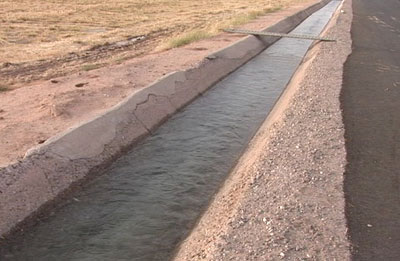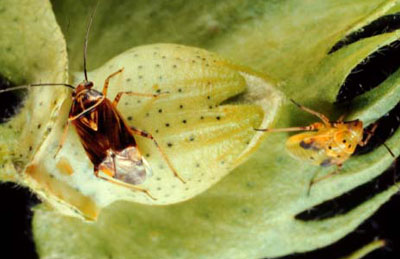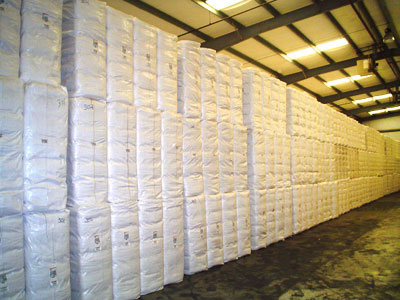Regulatory
The U.S. Supreme Court, without comment, denied two industry petitions seeking review of a Sixth Circuit Court of Appeals decision in NCC v EPA. That decision vacated a 2006 EPA rule that pesticides applied in accordance with the Federal Insecticide, Fungicide & Rodenticide Act (FIFRA) to, over, or near water do not require National Pollutant Discharge Elimination System Permits (NPDES) under the Clean Water Act (CWA). The National Cotton Council issued a statement saying the Supreme Court's failure to review the NCC v. EPA case creates an uncertain regulatory future for the application of agricultural crop inputs. The NCC, along with 31 other agricultural organizations, also signed onto a letter in opposition to Senate bill S. 787. The NCC noted that should this bill pass in conjunction with the Sixth Circuit decision, there could be severe ramifications for cotton producers, including CWA permitting for pesticide applications and increased wetland protections.
The NCC issued another similar statement after Senate Agriculture Chairman Blanche Lincoln (D-AR) and Ranking Member Saxby Chambliss (R-GA) introduced a bill that would amend FIFRA to exclude pesticide applications from the need for permits, provided the pesticides are applied in accordance with the product label. The NCC noted that, “This bill will restore certainty for cotton farmers who use crop protectant products safely and responsibly.” House Agriculture Committee Ranking Member Frank Lucas (R-OK), along with six of his Committee colleagues, introduced a companion bill that clarified that the use of a pesticide consistent with its registration under FIFRA should not be subject to a costly, redundant and unnecessary permit process under the CWA. House Agriculture Committee Chairman Collin Peterson(D-MN) introduced a similar bill.
 Pesticide users and stakeholders warned of possible legal issues as EPA moved forward with its draft general permit for pesticide applications over, to, or near U.S. waters. |
Later, pesticide users and stakeholders warned of possible legal issues as EPA moved forward with its draft general permit for pesticide applications over, to, or near U.S. waters. Industry groups also contended that EPA's plan would unlawfully expand the scope of waters subject to the permitting program by regulating discharges to conveyances such as man-made irrigation ditches that connect to U.S. waters.
In a NCC-coordinated letter to Senator Lisa Murkowski (R-AK), the NCC and 137 other commodity and agricultural organizations declared their support for her introduction of a bipartisan disapproval resolution to stop EPA from regulating greenhouse gas emissions under the Clean Air Act (CAA). The resolution sought to repeal EPA’s finding that greenhouse gas emissions endanger the public health and welfare. The breadth of support from agriculture, which eventually grew to 175 groups later in the year, encouraged several Democratic senators to co-sponsor the resolution.
Prior to the Senate consideration of the resolution, NCC President/CEO
Later in the year, a bipartisan bill was introduced by House Agriculture Committee Chairman Collin Peterson (D-MN), along with Representatives Ike Skelton (D-MO) and Jo Ann Emerson (R-MO), that would amend the CAA to prohibit EPA from regulating greenhouse gases based on their effects on global climate change. In addition, a dozen House Republicans and 17 associations/companies filed a lawsuit in the U.S. Court of Appeals for DC challenging EPA’s finding that greenhouse gas emissions endanger public health and welfare under the CAA. Responding to bipartisan pressure, EPA Administrator Lisa Jackson told Senators she would delay regulation of greenhouse gas emissions until 2011 at the earliest, adding that regulation of the smallest emitters would not begin until 2016.
In response to an Occupational Safety and Health Administration (OSHA) Advanced Notice of Proposed Rulemaking request for comments relating to the regulation of combustible dust in the workplace, the NCC and seven other cotton industry organizations submitted comments that urged the agency to "use caution" in considering additional industry regulations. In addition to the comments, answers to 69 questions posed by OSHA were provided. A NCC letter cited industry support of OSHA's overall efforts to improve safety in the workplace but cautioned OSHA to focus its efforts in this case to industries that have experienced problems with combustible dust. It asked them not to attempt to regulate operations such as gins, warehouses, cottonseed storage and processing facilities, and textile mills that have "no demonstrated history of combustible dust incidents" and that can demonstrate that conditions conducive to achieving dust minimum explosive concentrations do not exist.
The NCC worked closely with other organizations and Senators in an effort to ensure that a Senate food/feed safety bill did not include arbitrary, unnecessary and burdensome tracing requirements and fees on gins, cottonseed handlers and processors. As part of that effort, the NCC, along with 27 other associations, sent a letter to the Health, Education, Labor and Pensions (HELP) committee expressing concern for traceability or record-keeping requirements that would hinder traditional marketing on a commingled basis. In addition, NCC President Mark Lange sent Cotton Belt Congressional Members of HELP a letter outlining the cotton industry’s concerns. The Senate passed legislation that would greatly strengthen the Food and Drug Administration’s role in food safety but a Senate/House conference (add final outcome) did not occur in the late year lame duck session.
Pest Management
In an unprecedented event, NCC Chairman Eddie Smith, along with other commodity organizations’ chairmen, met with Agriculture Secretary Tom Vilsack and EPA Administrator Lisa Jackson at EPA headquarters. Among issues of concern discussed were the proposed spray drift language, atrazine and the regulatory slow-down for biotech trait approvals. Smith asked the administration officials for further similar meetings and Secretary Vilsack agreed and suggested that working groups be established with representatives of the commodities, USDA and EPA to discuss issues that affect U.S. agriculture.
 EPA officials expressed their appreciation for a NCC-coordinated opportunity for them to gain a better understanding of the severity of tarnished plant bug damage to cotton. |
The NCC submitted a FY11 federal budget request of $22.19 million for USDA’s Animal & Plant Health Inspection Service (APHIS) to provide a federal cost share for the boll weevil and pink bollworm eradication programs, which are combined into a joint Cotton Pests account. Included in the NCC’s request were $7.86 million for pink bollworm eradication and $14.33 million for boll weevil eradication – the total being lower than the approved FY10 request of $23.39 million. The NCC also 1) requested sufficient funding to allow the Farm Service Agency (FSA) to make at least $100 million in loans to eligible Boll Weevil Eradication Foundations and 2) conveyed strong support for providing FSA with continued authority to make loans for activities associated with the pink bollworm eradication program as previously provided in the FY05 and subsequent years’ appropriations legislation.
The NCC continued working in conjunction with other agricultural organizations and registrants to improve the ESA consultation process. The Center for Biological Diversity filed notice of intent to sue the EPA for failing to adequately evaluate and regulate nearly 400 pesticides for their impact on hundreds of endangered species throughout the nation. Favorable rulings for the plaintiffs could result in restrictive buffers around critical habitats or the banning of certain pesticides in specific areas.
EPA received requests from the registrants to voluntarily cancel all product registrations containing methyl parathion, a restricted use organophosphate insecticide and acaricide used primarily on cotton, corn and rice, as well as other agricultural crops.
EPA announced it would terminate all uses of endosulfan, an important product for whitefly control on cotton in Arizona and California, after the agency’s determination that the risks posed to farm workers were greater than were previously determined in the agency's 2002 re-registration decision.
EPA officials expressed their appreciation for a NCC-coordinated opportunity for them to gain a better understanding of the severity of tarnished plant bug damage to cotton and difficulties in controlling these insect pests. The nine-member EPA contingent met with Mid-South Extension/research entomologists, producers, consultants and state agriculture department representatives.
Cotton Flow/Packaging
USDA’s Commodity Credit Corporation approved specifications passed for the 2010 crop year by the Joint Cotton Industry Bale Packaging Committee. The JCIBPC had modified the 2009 bale packaging specifications by adding ultraviolet (UV) ray inhibitors (light stabilizers) for all polyolefin (polyethylene film and polypropylene fabric) bale bags. As part of the UV inhibitor action, the JCIBPC included a statement reiterating NCC policy that packaging materials are approved with conventional bale storage in mind. It was stated that the action was not an endorsement of outside storage but an acknowledgement that UV inhibitors play a role in polyolefin bag performance.
 USDA’s Commodity Credit Corporation approved specifications passed for the 2010 crop year by the Joint Cotton Industry Bale Packaging Committee. |
In a separate action, the JCIBPC agreed to continue the policy of strongly encouraging gins using materials approved for use in experimental test programs to recess their bale ties. Gins also were urged to record and provide testing firms with a bale tag list when experimental test products are used.
The NCC monitored Federal Motor Carrier Safety Administration hours-of-service rules, including participating in their listening sessions on this key trucking issue. It also monitored ocean transportation developments, including when Congressional members made it clear that they were aligning themselves with their constituent exporters at a recent House Committee Transportation and Infrastructure Subcommittee hearing on Coast Guard and Maritime Transportation. The NCC remained an active member of various transportation coalitions that follow developments in all agricultural transportation modes. It supported several bills that moved through Congress that would make changes in the rail industry and at the Surface Transportation Board.
The APHIS Memphis office issued the first electronic signature on Phytosanitary Certificate Issuance and Tracking (PCIT) certificates for baled cotton. In addition, APHIS said a procedure for issuing an electronically signed PCIT certificate for a baled cotton shipment was implemented on a trial basis through that office. APHIS plans to make this option available across the Cotton Belt once the new procedure is accepted by U.S. cotton’s trading partners and some minor technical issues are addressed.
The NCC also continued to encourage merchants to utilize the EWR, Inc. “Update Shipping Order” feature.
Research/Education
Major agricultural groups, including the NCC, resigned from a multi-stakeholder effort to develop a consensus-based national standard for sustainable agriculture. The reason was “systemic limitations and chronic” anti-agriculture biases in the composition of the Standards Committee membership, which was weighted heavily toward organic production. However, the NCC remainedcommitted to the development and implementation of a valid approach to U.S. cotton industry sustainability, including jointly managing “Vision 21,” a Cotton Foundation project that has as one of its three goals -- completion of life-cycle studies to strengthen U.S. cotton’s sustainability message.
On other technical issues, the NCC:
- Cooperated with the National Cotton Ginners Association in promoting the Southwest, Western and Stoneville ginner schools and in reminding ginners to be diligent in adhering to all OSHA and workplace safety standards;
- Increased industry awareness about protecting U.S. cotton’s reputation after the “Cotton Contamination Survey 2009” found U.S. raw cotton fared well compared to other countries’ growths with five U.S. growths among the 10 growths from around the world where the degree of contamination was judged to be non-existent or insignificant;
- Applauded The Society of Agricultural and Biological Engineers’ announcement on its endorsement of the use of natural-fiber products, such as cotton, in remediating the Gulf of Mexico oil spill; and
- Welcomed the U.S. Supreme Court’s reversal of a lower court’s nationwide ban on the cultivation of biotech alfalfa. The NCC was part of a coalition of agricultural organizations which had filed a joint friend-of-the-court brief to the Supreme Court in support of the petitioners in Monsanto Co. v. Geertson Seed Farms.

